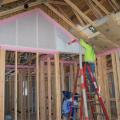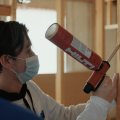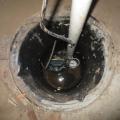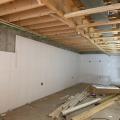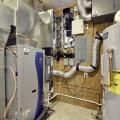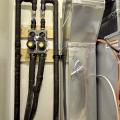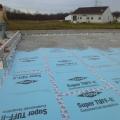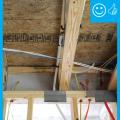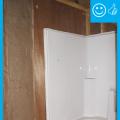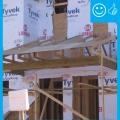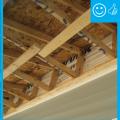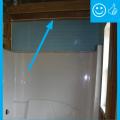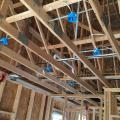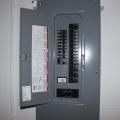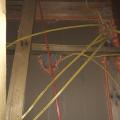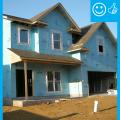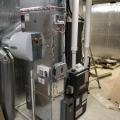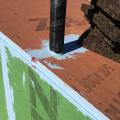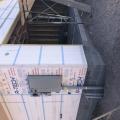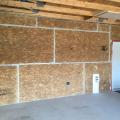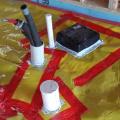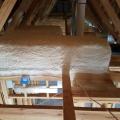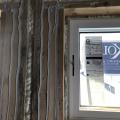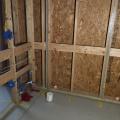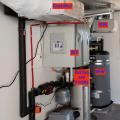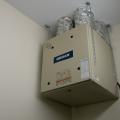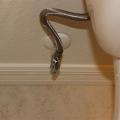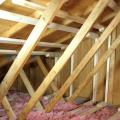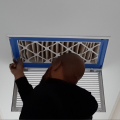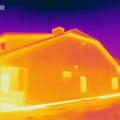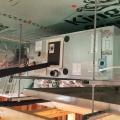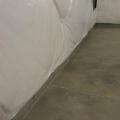Showing results 2601 - 2650 of 4973
Right – A strip of foam fabric is installed along the wall top plate to serve as an air sealing gasket when the drywall is installed.
Right – A sump pump with a perforated sump pit was installed in the crawlspace slab to reduce water accumulation under the slab
Right – A termite inspection gap is left at the top of the rigid foam board basement wall insulation.
Right – A transfer grille is installed high on a bedroom wall in a new-construction home
Right – A utility room provides adequate space for the home’s mechanical systems and electronic smart home monitoring equipment.
Right – A ventilating dehumidifier with a fresh air intake is tied into the central duct system of this mixed-humid climate home.
Right – Adequate space is provided near the air handler for the water lines of this ground-source heat pump.
Right – After installing the insulated concrete foundation wall panels, the builder installed underslab rigid foam, which was topped by 4 inches of crushed rock then the poured slab.
Right – Air barrier and penetrations sealed between porch attic and conditioned space
Right – Air barrier installed under staircase (picture taken from house looking into attached garage)
Right – Air vents near the top of the crawlspace wall are not used as flood vents, and flood vents are installed close to grade
Right – All electrical boxes are carefully sealed as are all top plate-to-drywall seams.
Right – All insulated sheathing boards are installed according to the manufacturer’s recommended fastening schedule and taping specifications
Right – All of the cabinet seams in this HVAC air furnace are sealed with an approved metal tape.
Right – All penetrations through the roof decking are sealed with paint-on flashing.
Right – all seams in the rigid foam were sealed with tape before installing the wire lathe for stucco.
Right – All supply ducts in this home were located in conditioned space; any return ducts that were located in the attic were insulated with closed-cell spray foam and buried in the blown-in attic insulation to prevent air leakage and heat loss.
Right – An air-to-water heat pump efficiently provides hot water for radiant floor heating.
Right – An air-to-water heat pump provides water and space heating while a heat recovery ventilator provides fresh air that is filtered by the HEPA filter.
Right – An ENERGY STAR washer and heat pump dryer save energy and money for home owners.
Right – An escutcheon is installed on this toilet tank pipe to help air seal around the pipe and prevent pest entry.
Right – An existing gable wall is reinforced with horizontal braces that butt up to the gable end wall and connect back to multiple trusses; retrofit studs make full contact with the wall and the compression blocks and are connected to the horizontal brac
Right – An HVAC contractor installs a 4-inch-thick MERV 13 filter at the intake grille of this return air vent to prevent dust, allergens, smoke, and viruses from entering the duct system.
Right – An infrared image of this home shows very little heat transfer through the exterior walls.
Right – an instructor shows a student how to cut batt insulation around wiring rather than compressing the batt behind the wiring.
Right – An instructor shows students how to caulk the top plates of interior walls.
Right – An insulated space is provided in the home’s attic to house the HVAC equipment.
Right – Angled racks are used for the photovoltaic panel installation on this flat roof.
